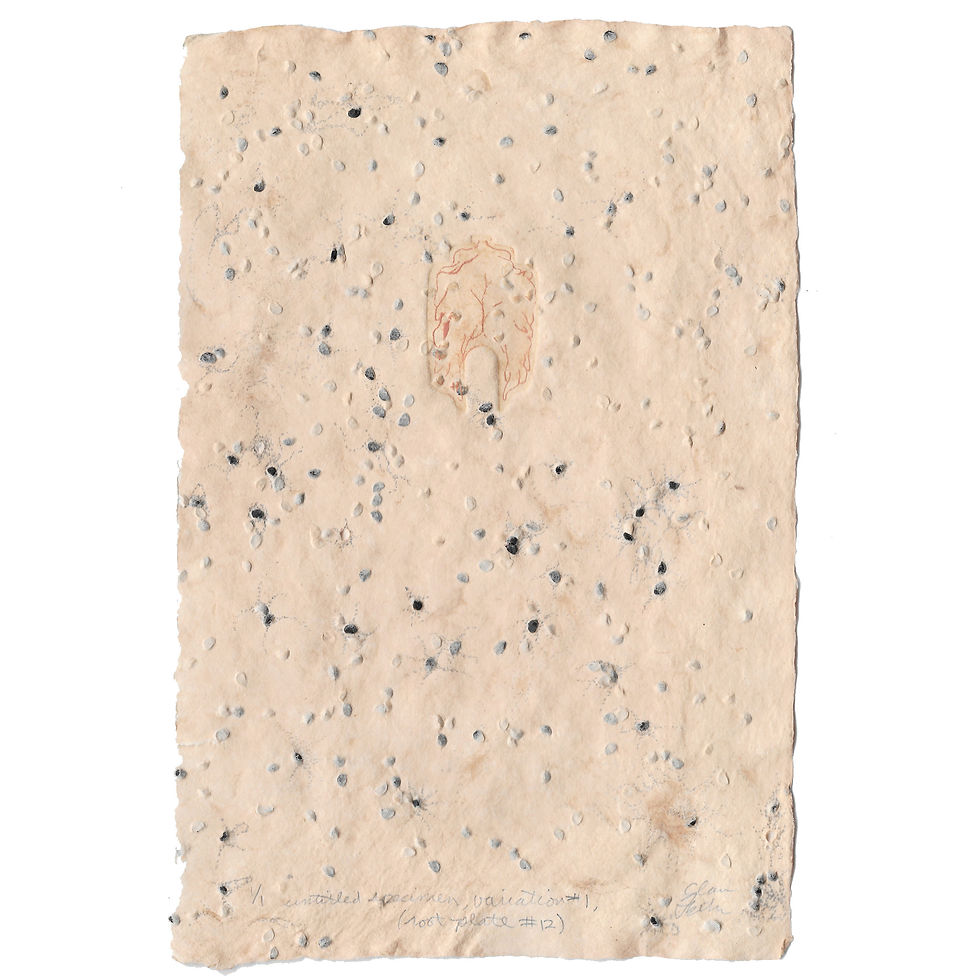The Test Prints


The Test Prints is an ongoing archive of prints for sale documenting my experimentations with color and material in my etching process. Existing in the cross section between making work to sell and exercising new techniques, The Test Prints have become an avenue for me to contextualize the small steps I'm taking towards the larger goal: writing, illustrating, and publishing Uncommon Biologies of the Uncommon World.
A test print is a test of the final print the printer wishes to achieve. It is an opportunity for the printer to make sure all the formal aspects of the print, like registration, color, etc, are just right before the final print is printed. At its root The Test Prints is no different. My trials in inking techniques, color mixing, paper choices, and text are all tests for the larger goal of my practice Uncommon Biologies of the Uncommon World. The usual association with test prints is closer to the scrap side of the print spectrum rather than a final print. My goal with the Test Prints is not to elevate a test print itself, but to speak on the framing of information to make an idea believable, real. By referring to my digital shop as The Test Prints (calling prints for sale test prints) am I devaluing my work, or am I bringing value to my test prints by placing them in a space of finer art?




The Test Prints
Test 2:
Color Tests - allowing the landscape to guide my color choices, dirt bag style
The Color Tests
Removing myself from a traditional studio setting and inserting myself in a natural one, like so many, is an integral part of my practice. Surrounding my senses with a natural environment allows my mind to wonder, ask new questions, and come to new conclusions. I am constantly thinking about the relationships between biomatter and nonliving materials, like minerals, chemicals, etc. The following prints are a product of my studio walls expanding from physical brick and mortar into the natural.
The influence of individual landscapes becomes more apparent when you look for the smaller series of prints within this larger collection. One can form individual color palettes in their mind and start to draw conclusions about the type of ecology, geology, and biology I might have been surrounded by for each grouping of prints.
This collection finally offers the opportunity to begin speaking on the performance of Uncommon Biologies of the Uncommon World. There is much to say on this, but I will plant the seed with the following: I am creating a fictional world and telling the viewer it is real through specific representation of information. I am splitting my time between making the foundational research and tests in a traditional studio (lab) and working in the field with a mobilized studio (field kit). I am inadvertently creating the space for a fictional character to arise as the discoverer of this fictional world. And furthermore as I slowly introduce more content framing and building this world the more I place myself in the role of this character.



More Color Tests to come!
Think there's somewhere I can't print? Let me know and I might just prove you wrong :)



This series of The Test Prints from the field comes thanks to Home Residency with Evan Marnell and Open Press Project. Support and resources from these two opportunities has pushed my studio further into the natural and out of the traditional. With a small scale etching press I can take my etched copper plates and print anywhere I please. Color combinations in this series were taken from and printed in Zion National Park, Utah; Big Sur, California; San Diego, California; and the prairies outside of Omaha, Nebraska.

The Test Prints
Test 1:
Paper Tests - I love printing at Home and home is everywhere
The Paper Tests
Like other opportunities that give full responsibility to build a productive day to day and week to week schedule, the freedom that rose out of Home Residency has reopened doors to processes that I have neglected do to time and resources, such as paper making. Choosing to take this opportunity and expose the simplicity of paper making at its core, I started with standard colored inkjet printer paper tearing, blending, and color mixing those pulps to result in new colors. Really it would be more appropriate to call this process paper repurposing.
The paper making done in this collection was made between sessions of shaping, filing, polishing and etching copper plates. Copper is an element and responds heavily to shifts of moisture and oxygen within its environment. In conjunction with influence from the Neraksa prairie, there is a vast array of color changes my copper etching plates go through that have greatly influenced the pulp colors. From the appropriately and obviously named copper color one could expect in a pack of Crayolas to a beautiful Tiffany’s Blue, the colors in this collection come as a result of watching my plates take on new colors from day to day, sometimes from hour to hour, and then hoping on my bike and riding through the muggy, buggy prairie. Again, an attribute to the importance of space to my practice.






This series of The Test Prints comes with a huge thanks to Evan Marnell with Home Residency. This program has given me the time and space that so many emerging artists seek out, and few have the opportunity to take advantage of. This first series of prints is a result of this total freedom to make. As my practice and The Print Tests move forward, I am excited to continue exploring paper repurposing and the color results that come from these experiments, as well as returning to more traditional paper making processes.













































